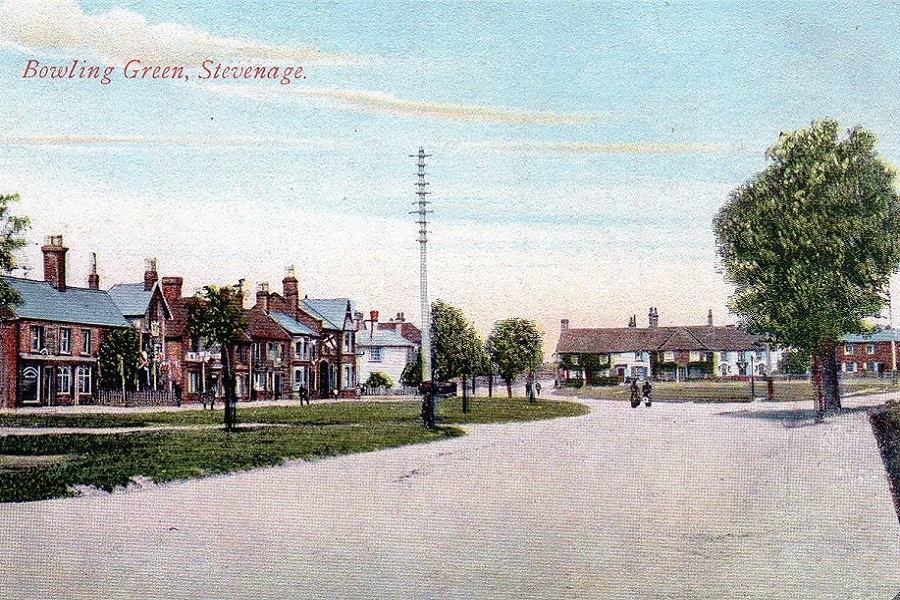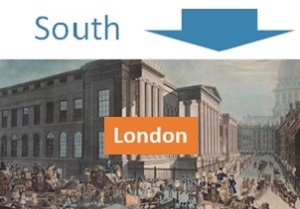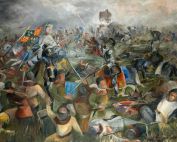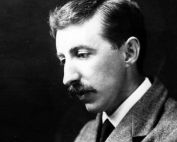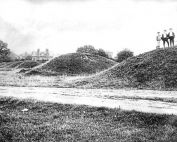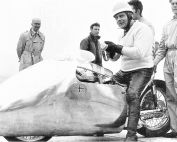Stevenage and the Great North Road
A convenient stop for the stage-coaches heading to and from London, the wide Stevenage High Street became packed with inns servicing the passengers, coachmen and their horses in the 18th and early 19th centuries. Twenty-one coaches passed through Stevenage each day in 1800 with services to Edinburgh, Carlisle and Glasgow.
The most well-known of the coaching inns was The Swan which was located on the east side of the triangular Bowling Green. Others included the White Lion and Red Lion which both continue as pubs/restaurants.
The impressive Cromwell Hotel gives the appearance of being a coaching inn but its history is more varied. It was once a farmhouse and home to John Thurloe secretary to Oliver Cromwell.
The Great North Road ran through the High Street until the town was bypassed by the A1(M) in 1962.
Just south of the new town centre are six mounds, Roman burial tumuli. These were right by the arrival of the bypass.
About Stevenage
The Saxon and medieval origins of Stevenage lie a mile to the west of the current “Old Town”. Take time out to walk up the Avenue to the early 12th century church of St Nicholas (start at the Great North Road sign opposite Alleyne’s School gates).
Alongside the Church is the house where novelist EM Forster lived – and nearby is the setting for Howards End.
Stevenage developed as a market town during the Medieval period. The right to hold a weekly market and an annual fair was granted by charter by Edward I in 1281. Unsurprisingly, this growth centred on the Great North Road.
As a result of the dissolution the manor and lands of Stevenage were granted by the King to the newly created Bishop of Westminster. In 1624 the bishop was granted three fairs, to be held on Ascension Day, St. Swithin’s Day, and on the Friday following. In 1792 fairs were held for nine days before Easter, nine days before Whit Sunday, and on the first Friday in September.
Many of the buildings along the wide High Street where the markets and fairs were held can trace their origin to the 17th and 18th century. Some retain their timber and plaster construction though others have been re-modelled and faced with brick. Many were, and continue to operate as hostelries, pubs and inns.
The early 20th century brought new industries including ESA (the Educational Supply Association) alongside the railway. Engineering industry also developed including HRD Vincent.
Motor cyclists will want to pay respect to the legacy of Vincent – once the cult bike of the day producing legendary models such as the Black Shadow. In the early days Vincent used the old Maltings between The Grange (formerly The Swan) and Alleyne’s School.
In 1946 Stevenage was designated the first “New Town” and a Development Corporation set up to plan a major programme of growth. Aimed at alleviating poor housing in London there were six neighbourhoods each with 10,000 homes. The road network included a pioneering system of separate foot and cycle paths; the pedestrianised town centre was the first in the country.
New industries attracted to Stevenage have reflected the national economy ever since: engineering, aerospace, insurance, IT and pharmaceuticals.
Visitors to Stevenage (other than students of Town Planning History) are unlikely to be tempted to explore the New Town which now dominates.
A popular nearby attraction is Knebworth House, home of the Lytton family since 1490. The original building was reimagined in a Tudor-Gothic style in the 19th century by its most famous resident, Edward Bulwer-Lytton (author, dramatist and statesman). Much of the interior of the house was redesigned by Sir Edwin Lutyens, who married Lady Emily Bulwer-Lytton.
Explore Stevenage
The images below provide links to additional information either on this website or elsewhere.
Stevenage Then and Now
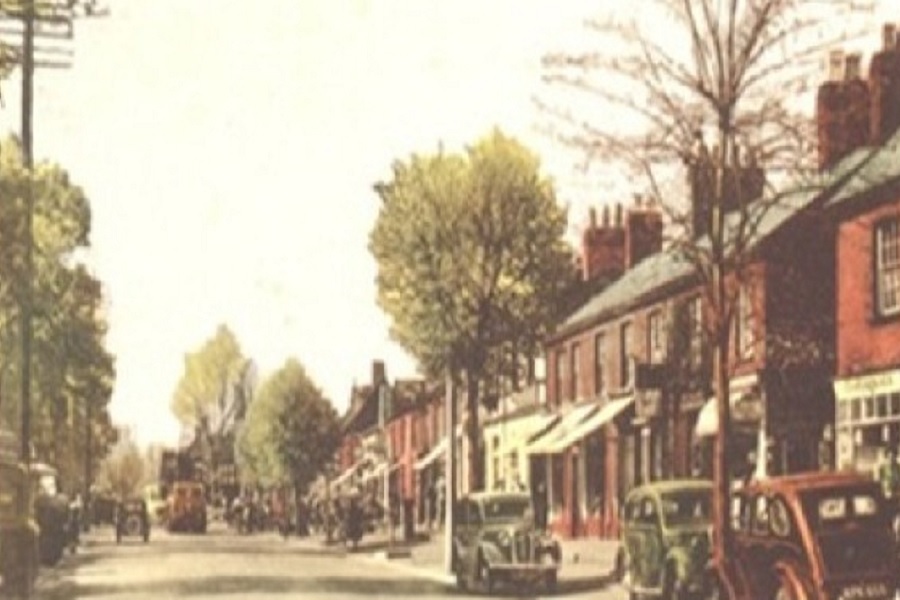
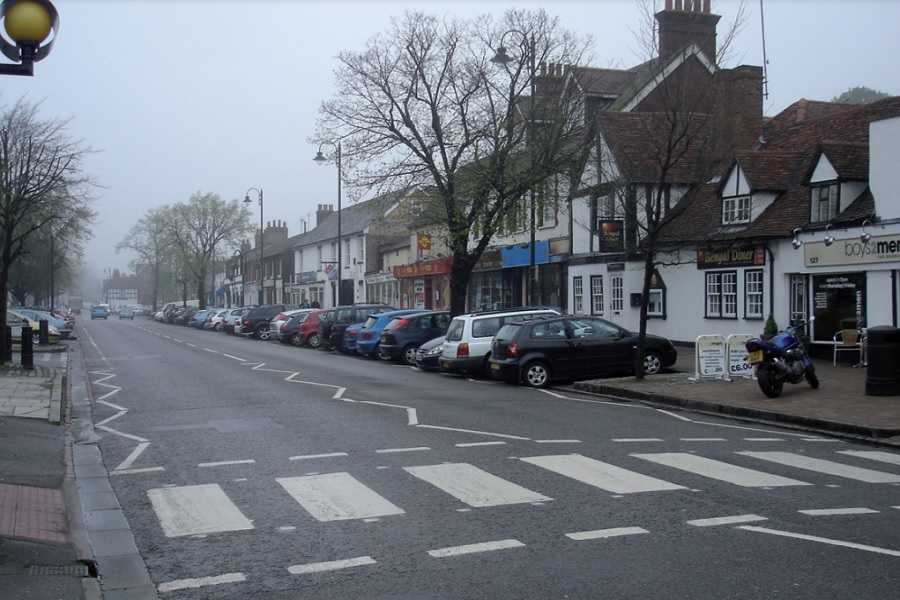
Stevenage High Street. Image Credits. Then – 1952 Postcard. Now – Stevenage Urban Transport Plan, 2010
Stevenage Inns
Hostelries of all kinds developed to meet the diverse needs of an increasingly mobile population. Some catered for drovers and farmers taking their livestock to market in...
The Battle of Barnet
The Battle of Barnet may sound like a dispute between commuters on the Northern Line but in fact took place in 1471 and some 3,000 people died. It was one of the...
E M Forster
The writer Edward Morgan Forster lived at Rooks Nest House near Stevenage between the ages of 4 and 14. His time there had a lasting impact on him. In.....
Six Hills – Stevenage
Alongside the original route of the Great North Road just south of Stevenage town centre there are 6 rounded barrows. There was damage to the Six Hills.....
George Brown
George Brown was test rider for Vincent in their heyday and in 1961 took the Standing Start Kilometre World Record for up to 1000cc machines with an.....

